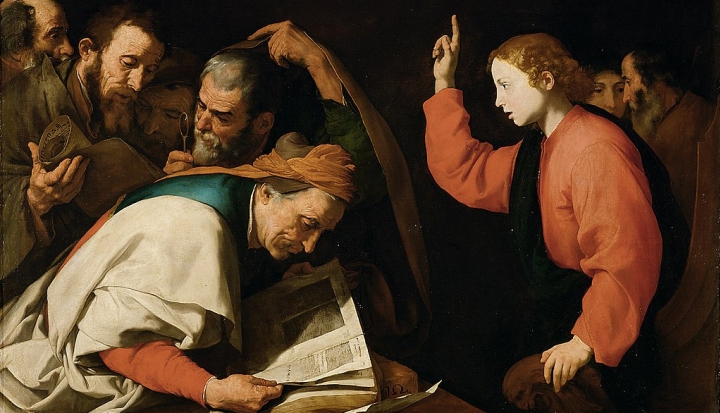How did you get to be who you are? It’s a question we ask of those who impress us. It’s also a question that fuels most criminal biopics. We want to know how exceptional souls get from there to there. Experience indicates that who we are now has something to do with where we’ve been.
It’s natural to pose the same question about Jesus. How did the man on the cross get to be that marvelous soul? We can only wonder, as the gospel writers do little to address our curiosity. The evangelists’ agenda—as Mark, first to make a written record, declares—is to proclaim “the good news of Jesus Christ.” Tell-all bios these narratives are not. They leave us desiring a host of details about personalities we know only with tantalizing incompleteness.
In matters of supply and demand, however, storytellers are always glad to oblige, filling in the blanks with gripping novels like Louis de Wohl’s The Spear or Pär Lagerkvist’s Barabbas. Since the second century, some have found their curiosity satisfied by writers of belated gospels geared more to their audience’s interests than available facts. The Gospel of the Birth of Maryand The Protevangelion of James saturate us with information about Mary’s parents, her childhood, background on Joseph, and, really, TMI about the physical birth of Jesus.
The Gospel of the Infancy of Jesus proposes that Jesus spoke from the cradle, announcing his divine nature to his mother. It also claims that a demon-possessed child was cured by contact with Jesus’ swaddling clothes. Other sick folk are healed by Jesus’ bathwater. A playground encounter with little Judas—already possessed by Satan as a “biter”—results in Judas trying to bite Jesus. Unsuccessful, he slaps Jesus on the very spot where Jesus will one day be pierced by a spear.
At age 7 Jesus makes clay animals with his friends—only his are able to move, eat, and fly. At a dyer’s shop, little Jesus dyes every cloth the color each patron desires. Young Jesus stretches boards in his father’s shop to the length Joseph requires. He cures the boy Simon from poisoning; Simon later becomes an apostle. Jesus does the same for James, his “brother” in Acts. Jesus recites the Hebrew alphabet before it’s taught to him. If you ever wondered what Jesus discussed with Temple scholars at the age of 12, that conversation is defined. Jesus continues to study the religious Law until he turns 30.
Thomas also contributes an infancy gospel, we’re told. At age 5 Jesus clarifies clouded water and makes more toys come to life. Disturbingly, he also withers a boy who angers him, drops a playmate at a distance, and blinds those who accuse him.
Such stories show the trouble with extrapolating a relentlessly miraculous upbringing. Better to be guided by Luke, who assures us that Jesus “advanced in wisdom and age.” It’s an upbringing less theatrical but it displays the meekness Jesus later recommends to the rest of us.
This article also appears in the April 2019 issue of U.S. Catholic (Vol. 84, No. 4, page 49).
Image: via Wikimedia Commons













Add comment